I did bodyweight lunges every day and can't believe how much they've boosted my strength, stability and more
Keen to up your strength?
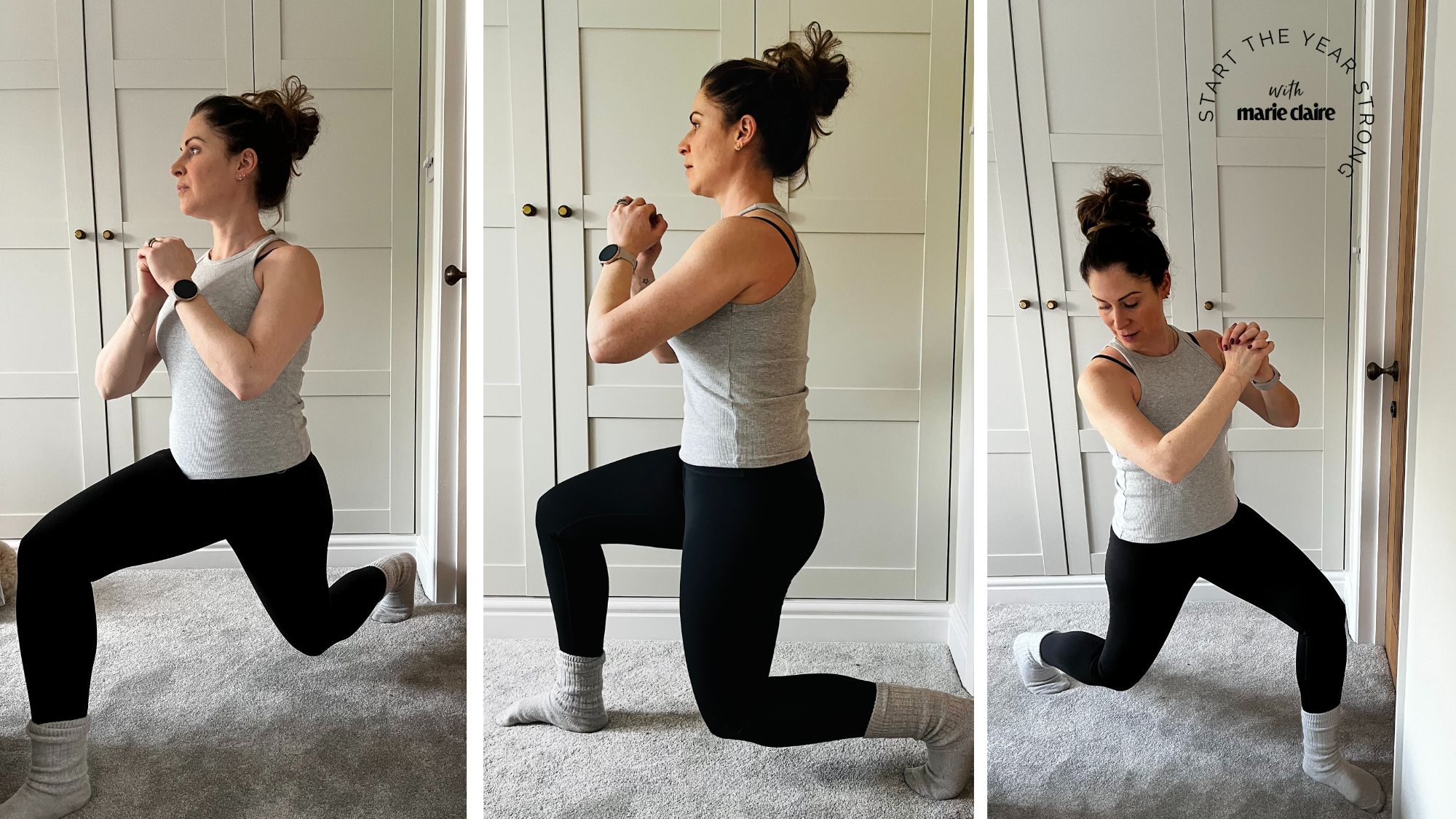

I’m not exaggerating when I say I love a fitness challenge. 30-day wall sit? I’m in. Planking everyday for a month? Bring it. Attempting bodyweight lunges every day for a week? Consider me sold. As a committed exerciser, it can be tricky to find new ways to mix things up in my workout regime to keep it fresh and interesting. And we all know that variety is the spice of life, and simply doing one form of exercise – while always better than doing none – is bound to get dull, which is where a challenge hits the spot.
But switching things up doesn’t have to mean trying the latest fitness trend or shelling out your hard-earned cash on swanky new equipment – sometimes, the best things in life really are free. Call me old fashioned, but there’s nothing I love more than nailing the basics (which, incidentally, is great for reducing your risk of injury and ensuring correct form). With that in mind, for my latest challenge, I looked to a move that's considered one of the core pillars of strength-based training: the bodyweight lunge.
Think they're too simple to improve your fitness levels? Let me tell you, there’s nothing basic about this form of weight training move (other than how easy it is to master). A staple of most strength-training regimes, chances are, you’ve done many a lunge in your time. While it may be easy to master form-wise, it certainly packs a punch in terms of benefits, promising to improve your balance, flexibility, core strength and stability, as well as toning those all-important leg muscles.
In short: it's a great form of low-impact strength training that I knew I couldn’t go far wrong with doing daily. Read on to find out how I got on – and you might be interested in our guide to strength training for beginners and strength training at home, as well as finding out how our Senior Health Editor Ally Head got on trying strength training every other day, too. Yep - we’re big fans of building a body for life here at MC UK...
I tried bodyweight lunges everyday for a week – here’s how I got on
What is a lunge?
If you’ve read this far and you’re wondering what a lunge even is, rest assured – it couldn’t be simpler. One of the first moves you’re likely to perform in any gym or strength-based class, a lunge is a compound strength move we actually perform all the time in our everyday routines (think walking upstairs or picking something up from the floor).
“A lunge is a strength training exercise that targets multiple muscle groups, primarily the quadriceps, hamstrings, glutes, calf muscles and core,” explains personal trainer Beth Davies. “It involves stepping forward, backwards or laterally to the side with one leg while keeping the other leg stationary, with the knee bent at a 90-degree angle.”
Here’s the science bit: lunges are a unilateral move, requiring us to work just one side of our body at a time, as opposed to bilateral exercises such as squats or push-ups, where we’re essentially working hard through both legs and arms.
Marie Claire Newsletter
Celebrity news, beauty, fashion advice, and fascinating features, delivered straight to your inbox!
Ever wondered why those weights feel so much heavier on one side than the other? Most of us naturally have a dominant side, so working unilaterally helps to ensure we’re developing muscle evenly on both sides of our body. As such, a solid strength training regime will always include features of both bi- and unilateral types of movement.
What are the benefits of lunges?
Their power doesn’t end in the gym, as lunges have excellent transferable benefits. “Lunges are a fantastic functional exercise, mirroring everyday movements like walking and climbing stairs, making them beneficial for real-life activities outside your training regime,” says Davis.
Even as a Health Writer who is no stranger to a lunge, I was surprised to learn just how many benefits they have. Personal trainer and founder of The Fun Fitness Coach, Paige Verity Davis is evangelical about them.
“In the world of fitness, lunges are a powerhouse exercise, renowned for their ability to sculpt and strengthen various muscle groups,” she tells MC UK. “The movement involved in a lunge activates your core, glutes, and legs, establishing it as a versatile and potent strength-building exercise.”
@lydiajeanfit ♬ Addicted - KING COLE
1. Leg strength
Perhaps the most obvious benefit, lunges are great for working those all-important larger muscles in the legs, namely the quads, glutes and hamstrings.
But they also help to strengthen the smaller, stabilising muscles around the knee and ankle joints, promoting joint stability and reducing the risk of injury, as well as improving our balance.
Running or spinning fan? Lunges might be your new BFF. Music to my ears, given I love both these activities, Davis tells me that runners and cyclists, in particular, stand to gain significant benefits from incorporating lunges into their training routines.
“Lunges promote functional fitness, aiding in the development of the stabilising muscles crucial for endurance sports,” she explains. “The dynamic nature of lunges mimics the movement patterns essential for running and cycling, enhancing performance and reducing the risk of injuries.”
Win, win.
2. Balance and stability
“Lunges require coordination and balance, helping to improve stability in the lower body,” says Davies. “Not only this, proper execution also engages the core muscles, contributing to core strength and stability, improving balance.”
And while having good balance might not seem very sexy, you might be interested to know that it is linked to longevity: this study, published in the British Journal of Sports Medicine, shows that an inability to stand on one leg for ten seconds (albeit in later life) is linked to an almost 50% increase in the risk of all-cause mortality – a startling statistic, indeed.
3. Flexibility
Along with my running and cycling addiction comes the requisite extremely tight hip flexors, so I was pretty pleased to hear a regular lunge habit might be the solution.
“Lunges can enhance flexibility in the hip flexors and improve range of motion in the hips,” says Davies. “You can even try incorporating a lunging hip flexor stretch into your cool-down routine for a double-whammy benefit.”
4. Versatility
We have more good news: lunges are as versatile as they are simple. Not into a basic forward lunge? No problem. You can intensify the move in various ways – take your pick.
“Lunges can be modified and varied by changing the direction, adding weights, or incorporating other equipment into the move,” explains Davies. “This makes them super accessible and adaptable to different fitness levels and goals and adding variety to your training.”
@builtbydawson ♬ babydoll x the perfect girl (speed) - INDRAGERSN
How to do a bodyweight lunge with correct form
Ok, now you’re a convert – but as always, before starting any challenge, you’ve got to make sure you’re performing the move correctly. Not only will this help reduce the risk of injury, but it also ensures that you’re making the most of all those fitness gains. So, I turned to the experts for advice.
Davies advises following these steps for a basic forward lunge:
- Start by standing with your feet shoulder-width apart. Take a step forward with one leg, ensuring that your knee is directly above your ankle.
- Lower your body by bending both knees until your back knee is hovering just above the ground, forming two 90-degree angles with your knees.
- Keep your torso upright, or with a slight lean forward, and engage your core. Push off the front foot to return to the starting position.
- Repeat on the other leg.
I tried bodyweight lunges every day for a week – here’s how I got on
Days one to three
Form sorted, I was ready to give it a go. On the advice of Davis, I decided to start with two sets of ten lunges on each leg. And you know what? It was hard. Just one set on each leg raised my heart rate and left me a little puffed – I was surprised. I even had to take a little break before my second set (and I scoffed at doing two, rather than three sets!)
I soon worked out that I totally underestimated how challenging lunges can be. After turning to Davis for advice, it turned out that skipping my warm-up wasn’t doing me any favours (who knew that it's not a good idea to jump straight into a set of lunges?).
“Warming up and cooling down are crucial components of any exercise routine, including lunges,” she explains. “Prior to lunges, engage in a dynamic warm-up to increase blood flow, loosen muscles, and prepare your body for the workout. Incorporate movements like leg swings, hip circles, and light cardio activities.”
Once I’d started by warming up my body, the lunges did feel smoother, if not altogether easier. I also had to tweak my form as the quads in my rear leg were screaming at me almost instantly – a sure sign that I was carrying too much weight on my back foot, rather than focussing on my leading leg.
My ankles were also complaining - not helped by having twisted my left one wearing some ill-advised footwear the previous week. To say my hip flexors were tight is an understatement. However, as I increased my sets from two to three throughout the challenge, I could feel they were getting a satisfying stretch – not a benefit I’d foreseen, but a welcome one, nonetheless.
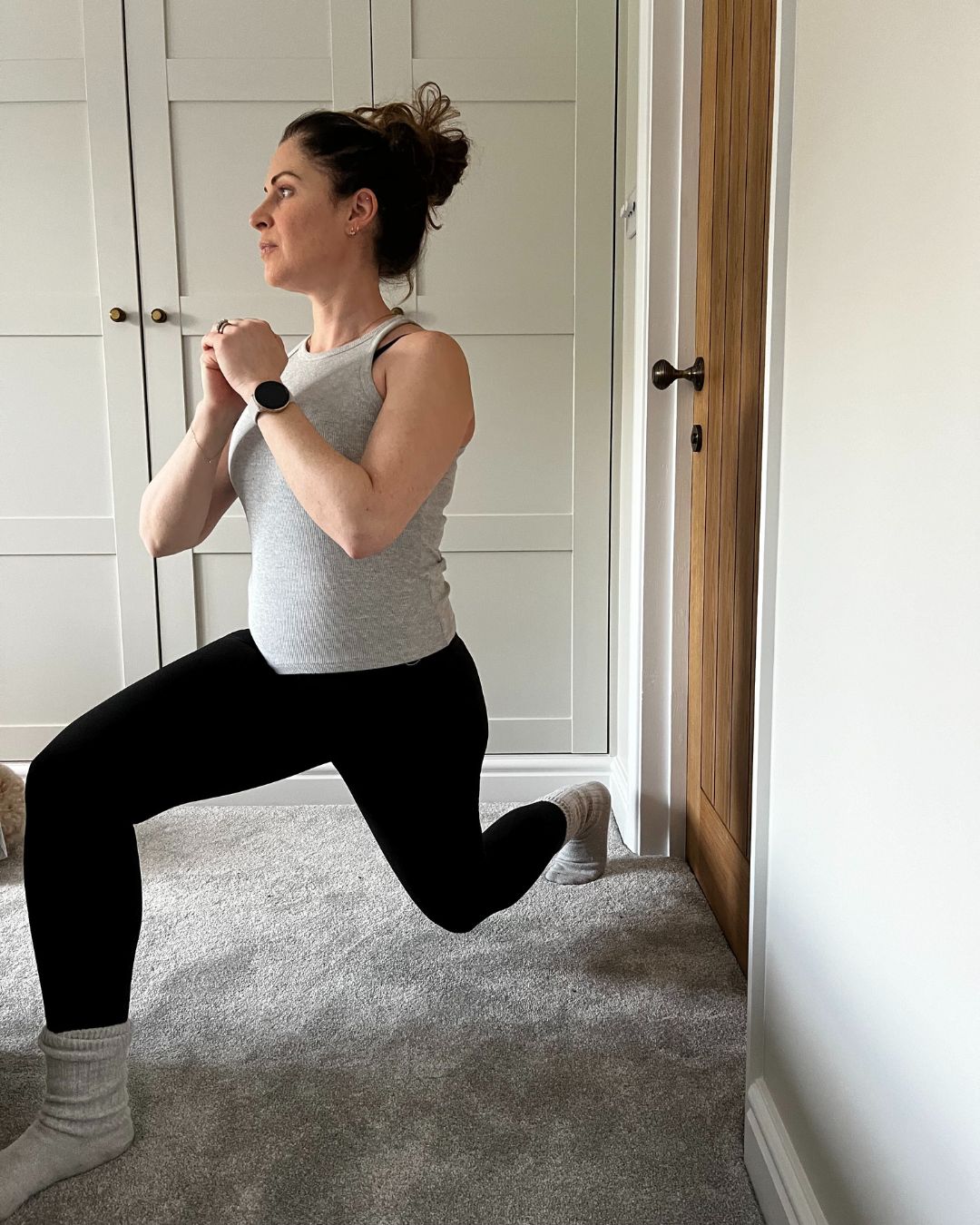
Anna halfway through her squat challenge at home
Days four to seven
Well and truly in the swing of the challenge, I was (fairly) happily completing three sets of twelve lunges each morning. My biggest take-home? That it was my mindset, rather than my body, that needed to change. I’ve always been a go-hard-or-go-home kind of exerciser, the type who doesn’t feel I’ve worked hard enough unless I’m dripping with sweat, legs shaking.
So, I had to force myself to slow down when lunging, my natural instinct being to add in a few jumps or work faster. But once I’d really nailed my form (I found a slightly forward-leaning stance really helped my balance), I made sure to lower and lift as slowly as I could – increasing what’s known in fitness circles as time under tension. This more mindful approach to the move connected me with what was going on in my body, rather than rushing through the challenge in a hasty bid to tick it off my lengthy to-do list – meaning I felt every twinge, stretch and click. The mind-muscle connection is real.
I also started to incorporate some foam rolling and targeted stretching after completing my lunges as the week went on, and I did feel more comfortable as a result.
Will I continue to incorporate lunges into my daily routine? While I can’t say that I’ll manage it every day, the challenge has definitely changed the way I think about movement and exercise. I still love the endorphin rush and adrenaline thrill of a sweaty cardio session, but there’s certainly a place in my regime for a slower, mindful strength-based routine to compliment and balance out the HIIT.
While I’d need to extend the challenge a little to notice significant strength gains, even just a week of lunging has left me feeling more stable and balanced in the move – and I’m pretty sure that the hills on my weekly run didn’t feel quite as challenging, either.
More than this, though, it’s reiterated once again that you don’t need loads of time, money or equipment to keep your body fit and healthy. Sometimes, less really is more.
Shop MC UK's go-to workout kit now:

Supportive, sweat-wicking, and butter soft, too, these Princess Diana-esque cycling shorts are affordable and perform well, too.
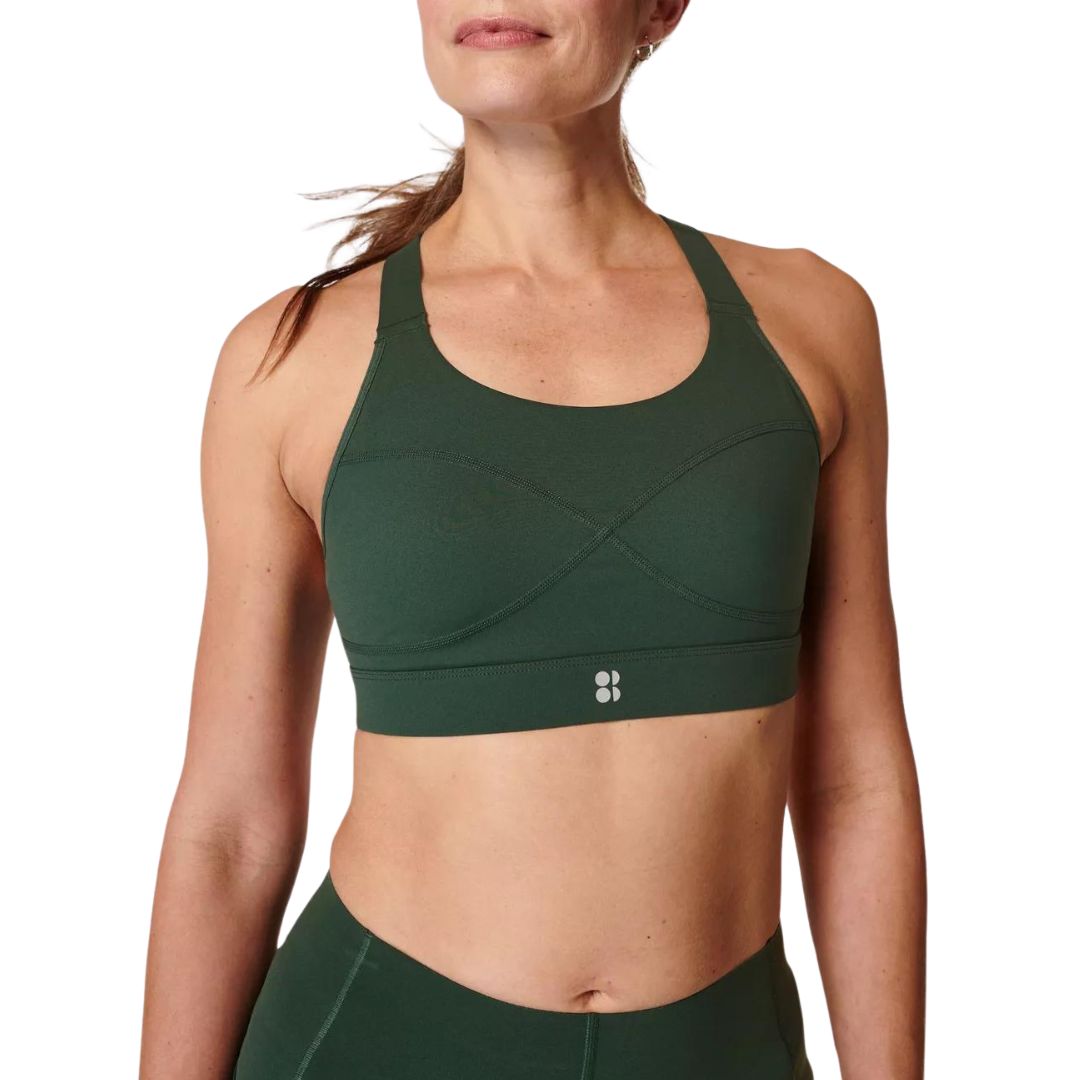
One of the brand's best-selling bras, the Power bra from Sweaty Betty ticks all of the right boxes. It'll hold your boobs in place for more intense sports like running and HIIT while also keeping you the right temperature and sweat-wicking moisture away from your body.
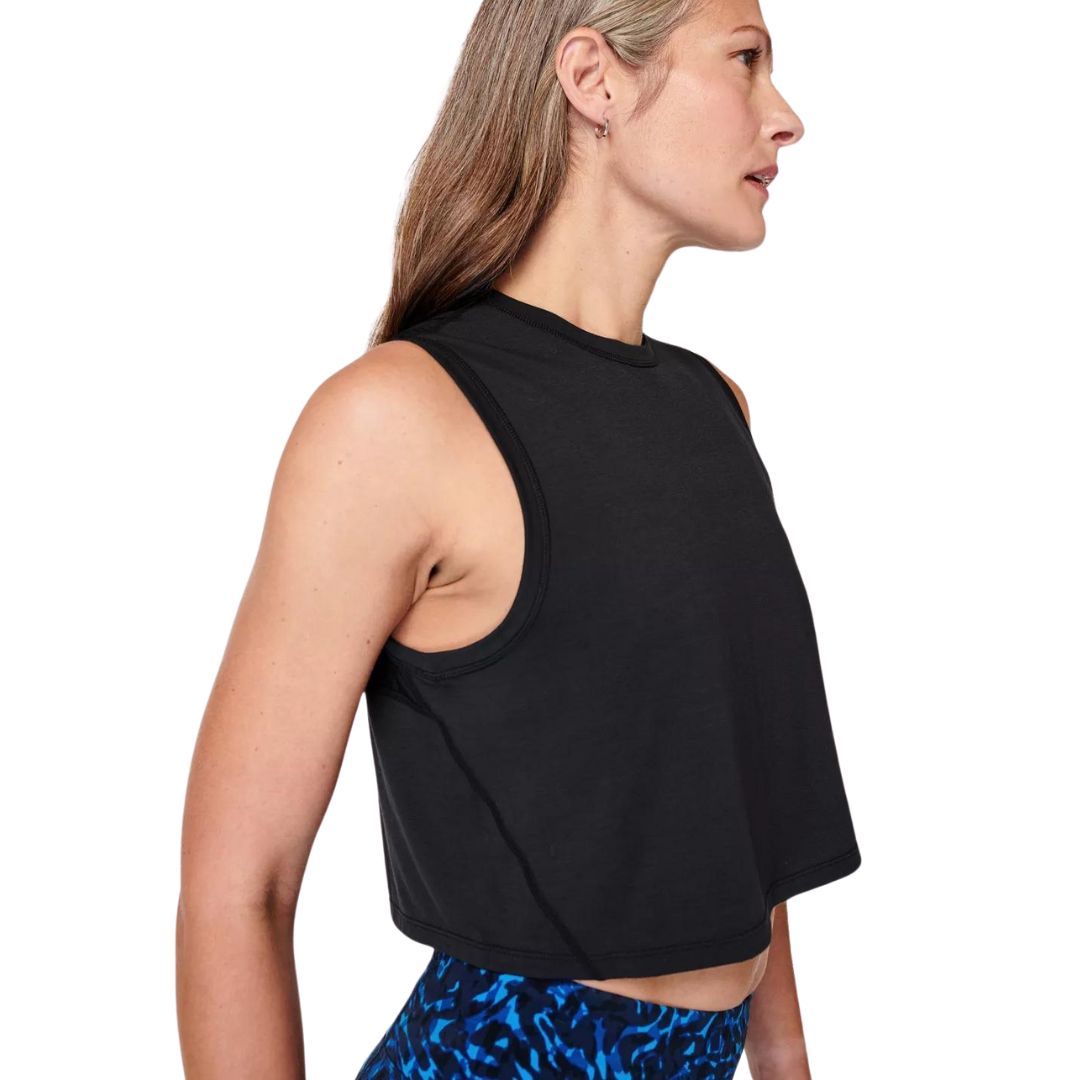
Soft to the touch and super breathable, this crop workout top from Sweaty Betty is another bestseller. The mesh detailing on the back that offers extra breathability, too.
Are bodyweight lunges effective?
They're known as one of the "big five" compound moves for a reason - the humble lunge is widely regarded as one of the best functional exercises you can do.
Personal trainer and founder of The Fun Fitness Coach, Paige Verity Davis even calls them a powerhouse exercise, renowned for their ability to sculpt and strengthen various muscle groups. “The movement involved in a lunge activates your core, glutes, and legs, establishing it as a versatile and potent strength-building exercise," she shares.
They're an excellent go-to as you can do them anywhere, the form is simple to master and they work multiple muscles and, in turn, they make everyday movements like walking and climbing stairs that bit easier.

Anna Bartter is a freelance journalist who writes about health, fitness and women's lifestyle for publications including Stylist, Metro and Psychologies, among others.
She's always on a quest to find a variety of fun and functional workouts that give you the most bang for your workout buck and she's passionate about championing movement for everyone's mental and physical wellbeing.
-
 Aimee Lou Wood has called out Saturday Night Live for its “mean” joke about her appearance
Aimee Lou Wood has called out Saturday Night Live for its “mean” joke about her appearanceBy Jenny Proudfoot
-
 As a denim obsessive, this is the only dress I'll be wearing this spring
As a denim obsessive, this is the only dress I'll be wearing this springDenim dresses are everywhere right now
By Sofia Piza
-
 This perfume was created in 1872, and I wear it today—it’s musky, sexy and deserves a spot in your collection
This perfume was created in 1872, and I wear it today—it’s musky, sexy and deserves a spot in your collectionIt smells nearly identical, 153 years later
By Nessa Humayun
-
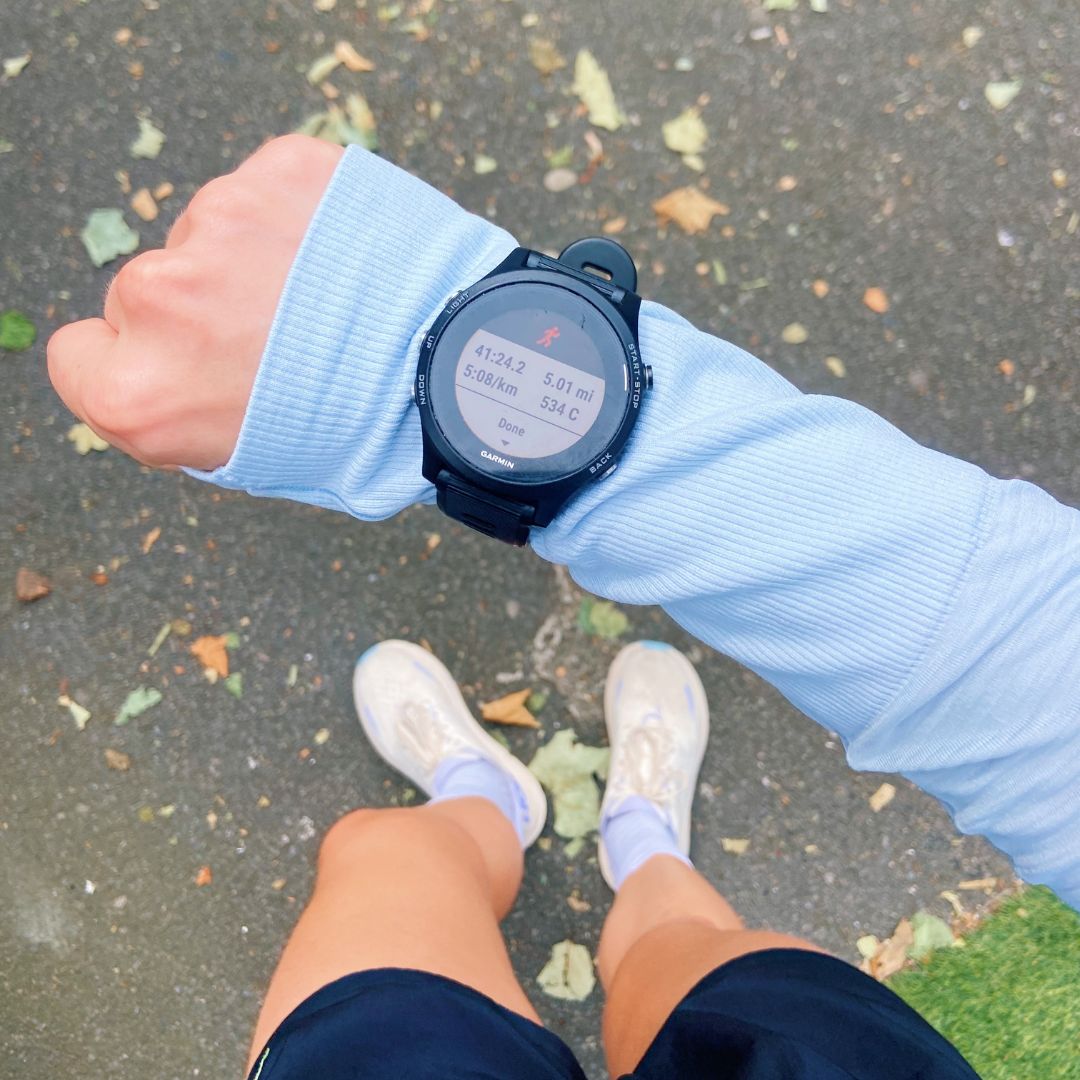 These tricks for building a simple yet effective morning workout routine have drastically improved my fitness
These tricks for building a simple yet effective morning workout routine have drastically improved my fitnessIt doesn't need to be all 5am starts and ten miles for breakfast.
By Ally Head
-
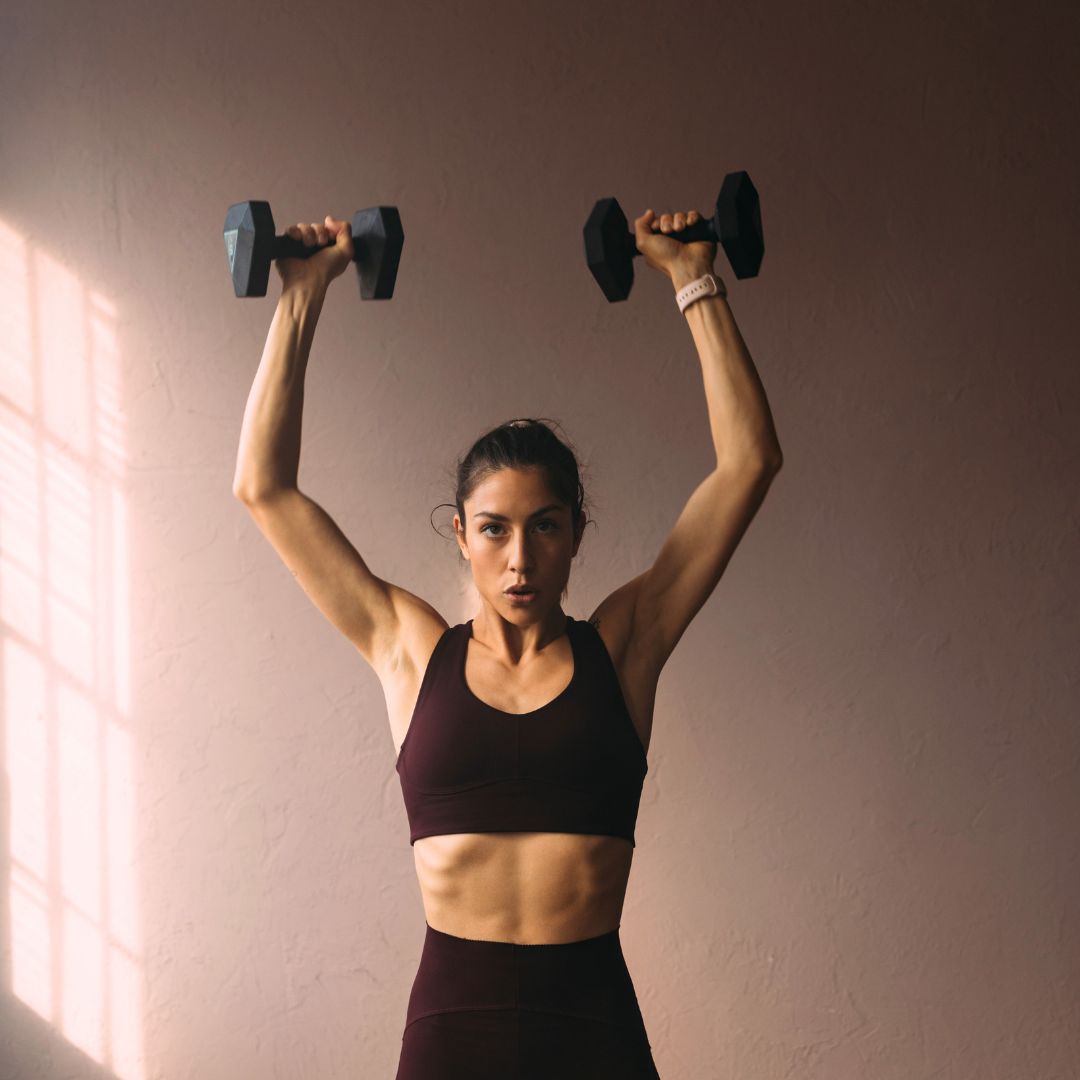 Shoulder exercises promise to improve both your posture and strength - 5 to add to your next workout
Shoulder exercises promise to improve both your posture and strength - 5 to add to your next workout*Bookmarks for later*
By Chloe Gray
-
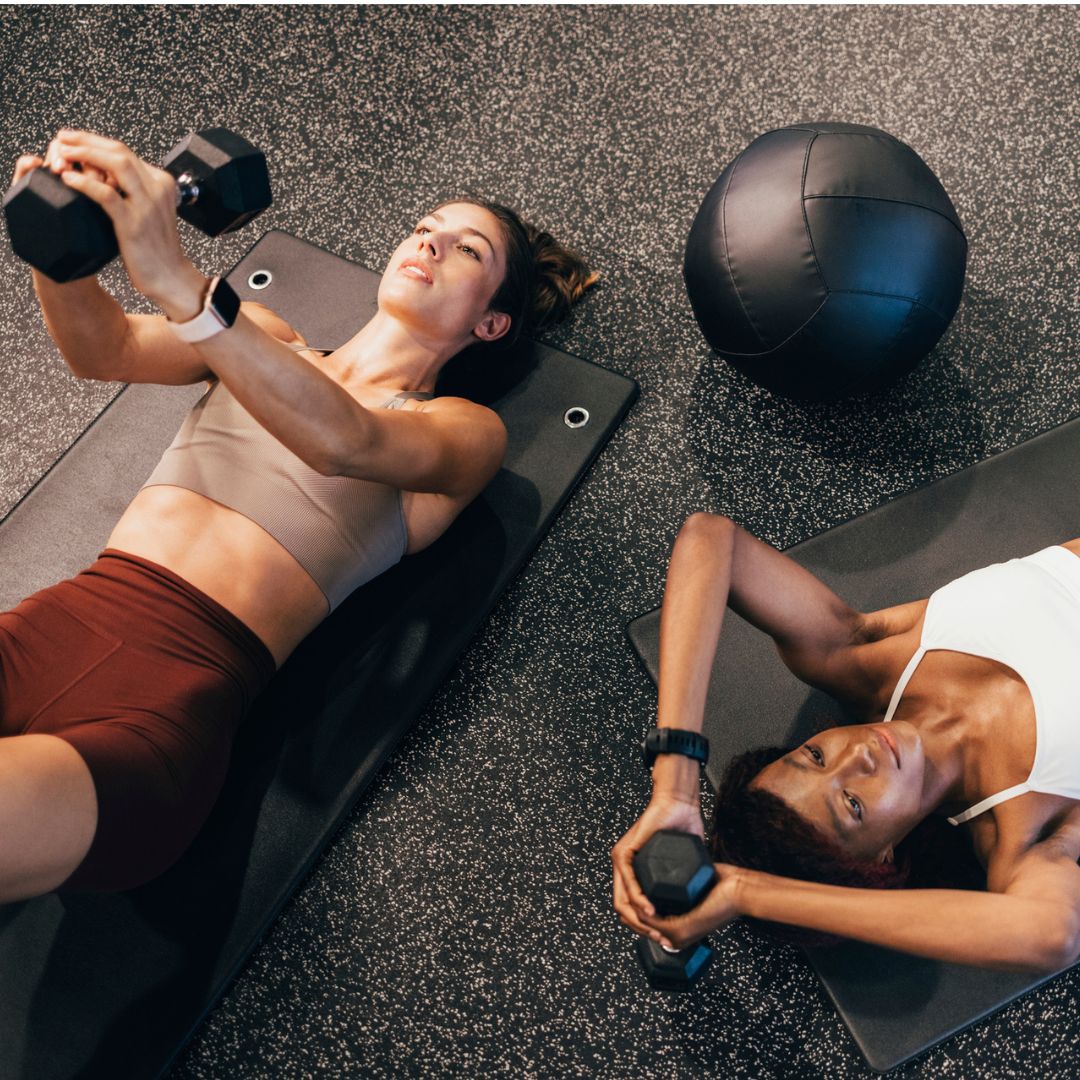 Low impact strength training is one of the most popular workouts of the year – how it promises to boost muscle and metabolism
Low impact strength training is one of the most popular workouts of the year – how it promises to boost muscle and metabolismYour need to knows.
By Abbi Henderson
-
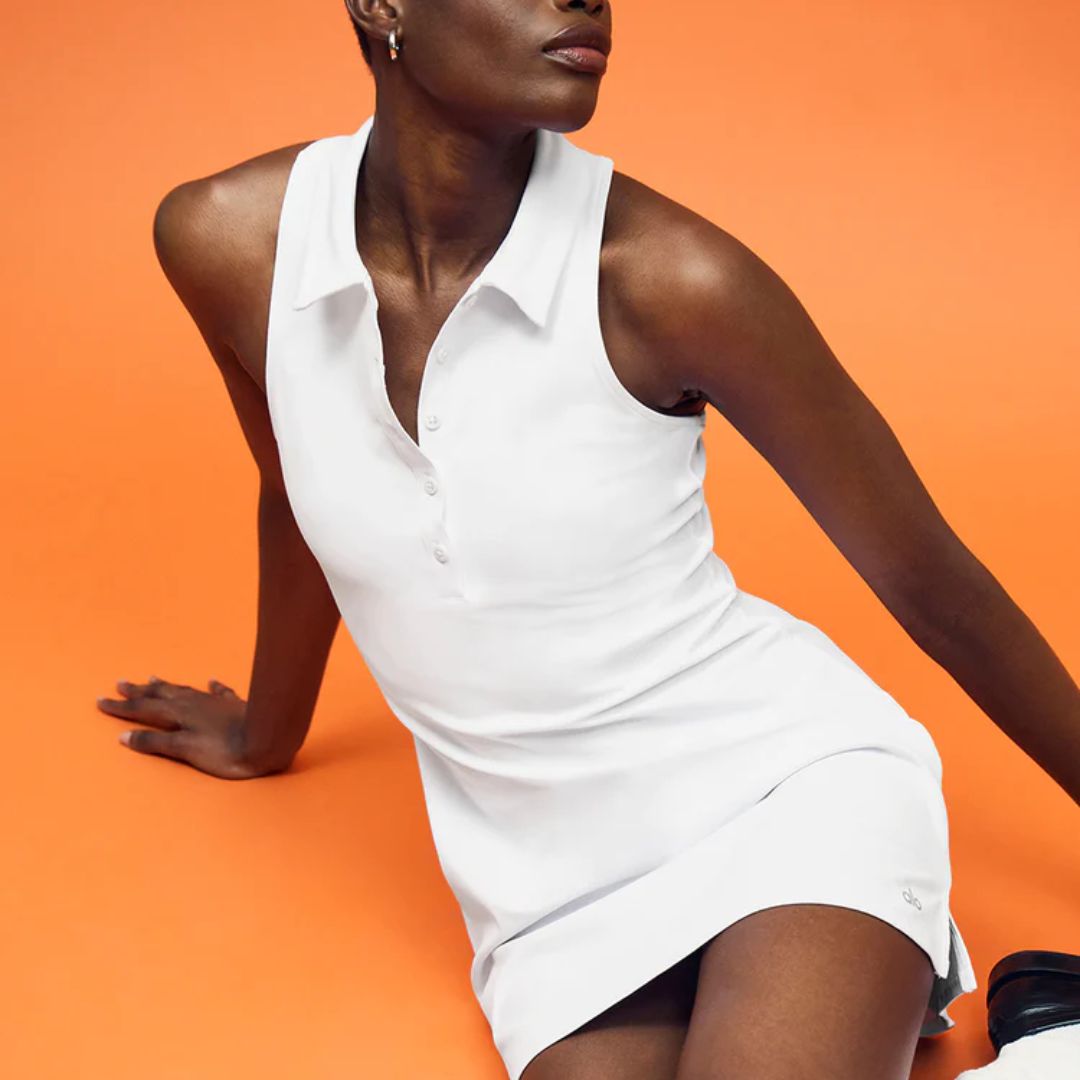 PSA: you can save up to 70% in the Alo Yoga sale - including the dress of my tenniscore dreams
PSA: you can save up to 70% in the Alo Yoga sale - including the dress of my tenniscore dreamsMCUK's editors rave about this kit
By Valeza Bakolli
-
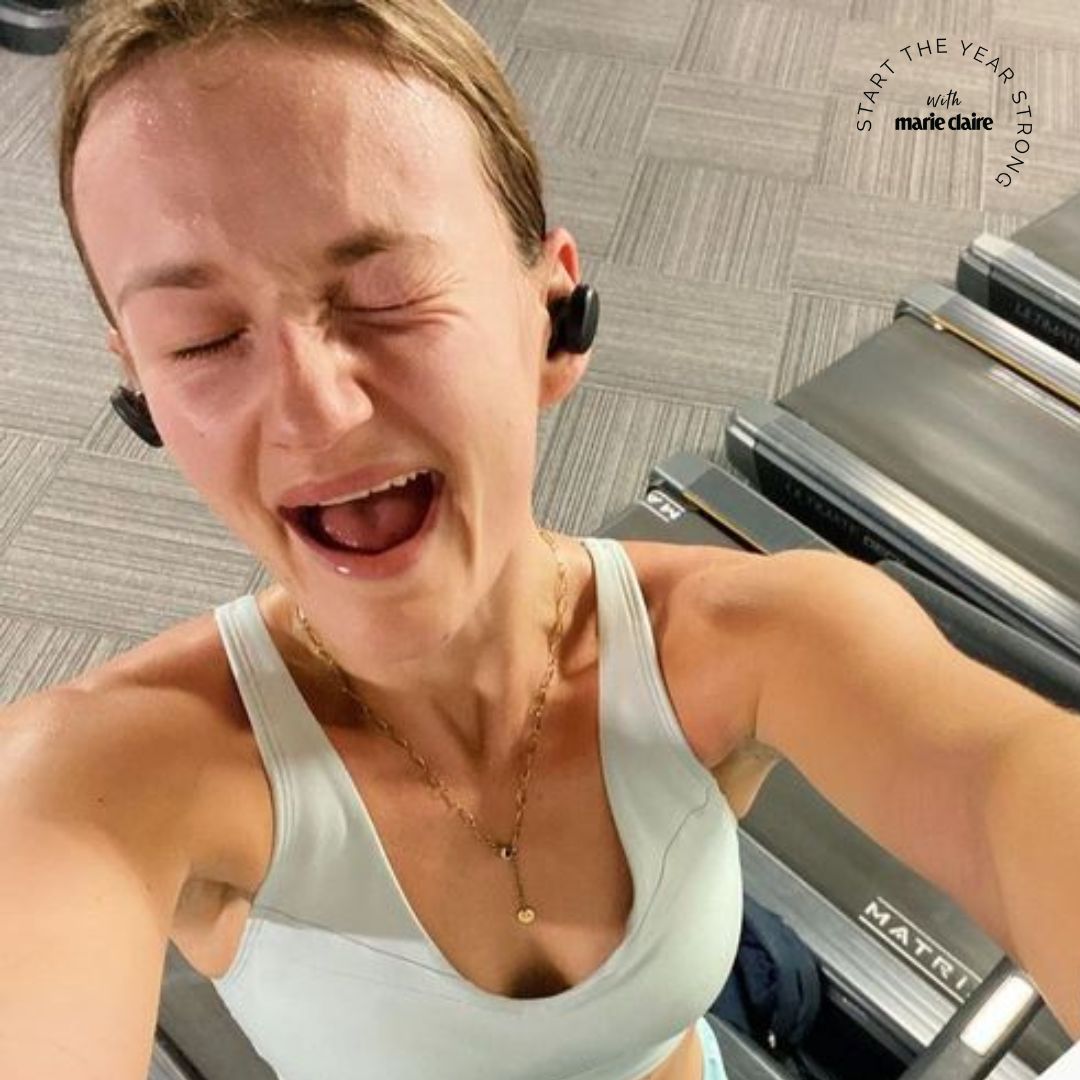 8 best high impact sports bras for running, HIIT and more that Fitness Editors genuinely rate
8 best high impact sports bras for running, HIIT and more that Fitness Editors genuinely rateBecause high-impact exercises require proper support
By Chloe Gray
-
 I'm a Health Editor who's sceptical about nutrition fads. My greens powder review? The viral Tiktok trend blew my mind
I'm a Health Editor who's sceptical about nutrition fads. My greens powder review? The viral Tiktok trend blew my mindHere's why.
By Ally Head
-
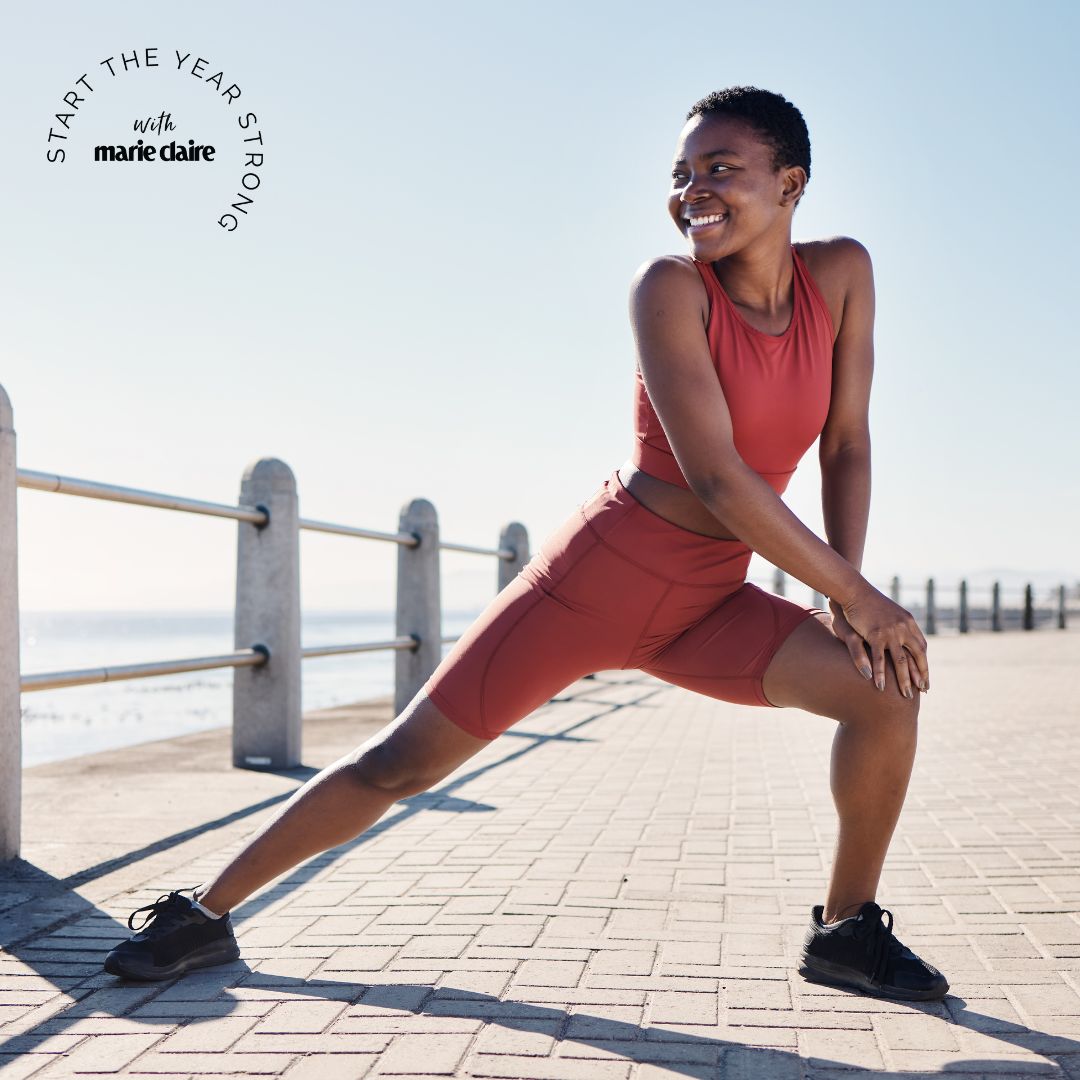 Cortisol-friendly workouts are trending, promising to aid fat loss, fitness and focus
Cortisol-friendly workouts are trending, promising to aid fat loss, fitness and focusTop exercises for stress-busting, this way.
By Rebecca Shepherd
-
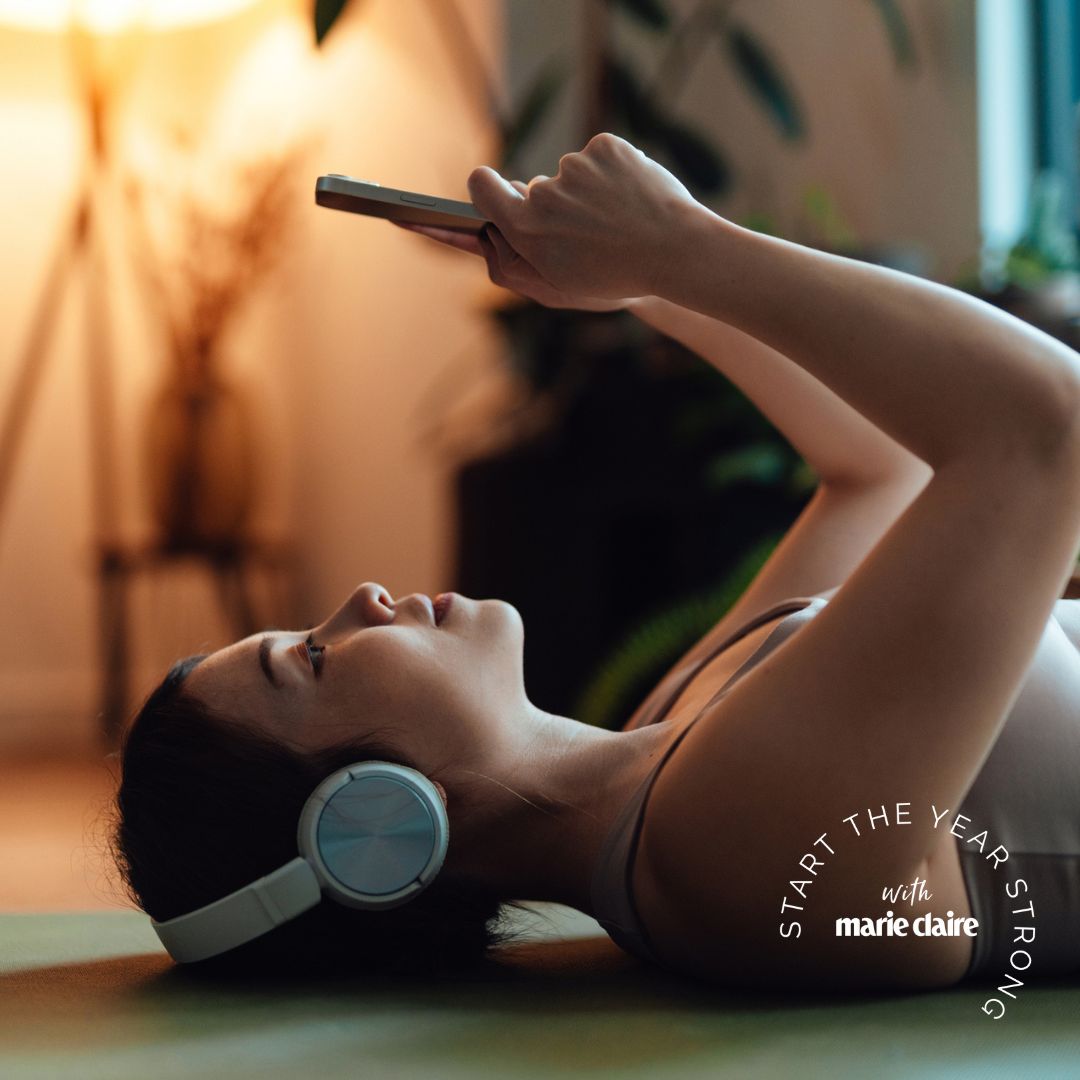 How to do wall Pilates, the workout that's been dubbed the most effective of the year
How to do wall Pilates, the workout that's been dubbed the most effective of the yearGive this one a go tonight.
By Ally Head